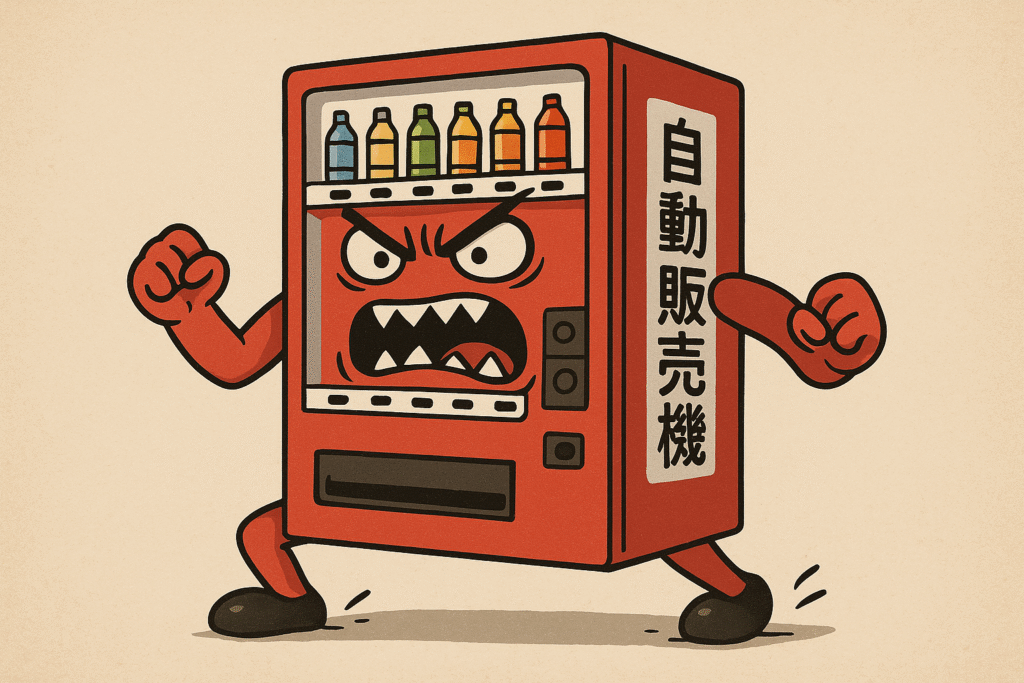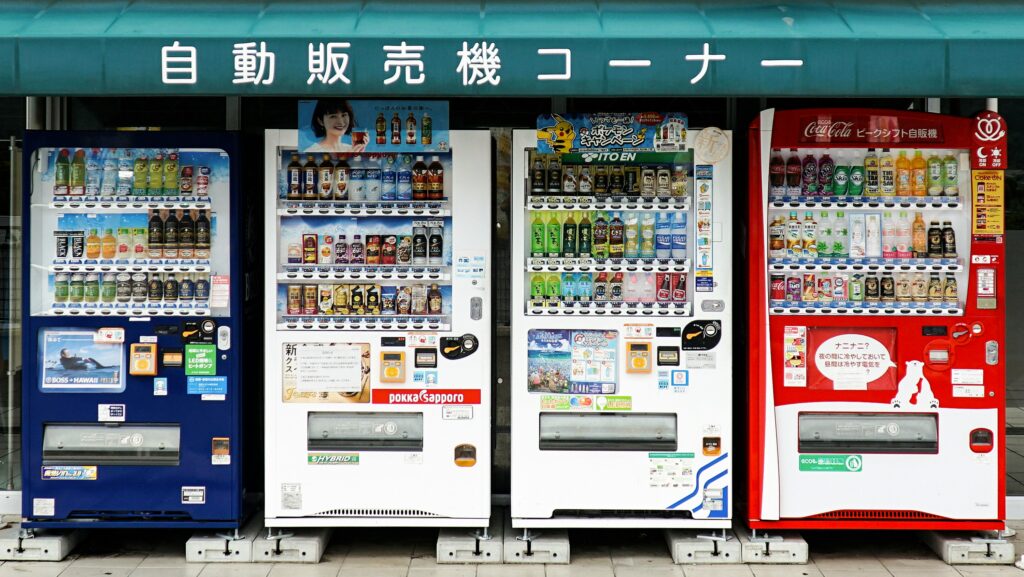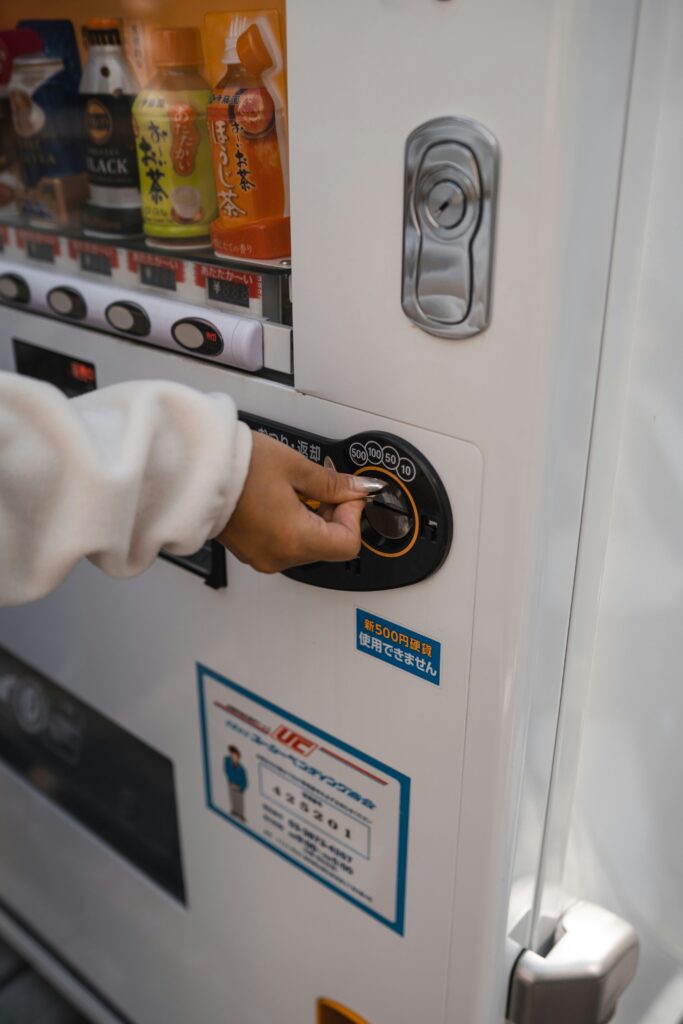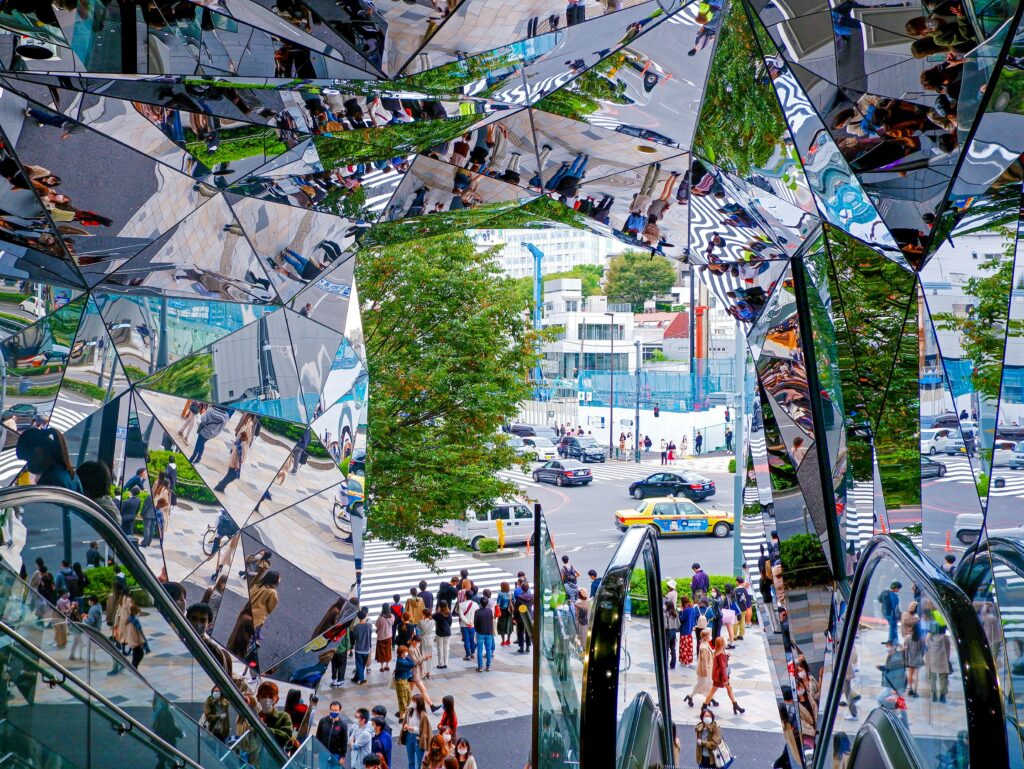
Surviving Japan’s Wildest Vending Machines: A Guide for the Brave and Curious
You’ve seen the photos: a sleek machine nestled against a serene temple, offering not just soda, but hot canned coffee, umbrellas, and… fresh eggs? Welcome to Japan, where vending machines (or jihanki) are less a convenience and more a national art form. With over 4 million machines across the country, they are an unmissable part of the cultural landscape.
But navigating this world isn’t just about pushing a button. It’s an adventure. Here’s your survival guide to conquering Japan’s wildest vending machines.

The Basics: Know Your Enemy (Er, Machine)
First, don’t panic. The fundamental operation is universal.
- Cash is King: While many now take IC cards (Suica, Pasmo) and some take credit cards, cold, hard yen is your most reliable friend. Always have a stash of ¥100 and ¥500 coins.
- The Green Button is Your Friend: On many modern machines, a glowing green button means “confirm selection.” On older ones, it might just be part of the design. When in doubt, just push your drink’s button.
- Temperature is Key: The blue light means cold; the red light means hot. A lifesaver on a chilly morning when you need that hot Boss Coffee.
Now, let’s get to the good stuff.
Tier 1: The Quirky & Convenient
These are the machines that make you smile and think, “Of course, why doesn’t every country have this?”
- The Full Meal Deal: You haven’t lived until you’ve bought a hot can of corn soup, a sandwich, a banana, and a full-sized meal of ramen or fried chicken from a machine. They’re surprisingly delicious and perfect for a quick, cheap lunch.
- Survival Tip: Look for machines outside supermarkets or on quieter suburban streets. They often have the best food options.
- The Wardrobe Savior: Get caught in a sudden downpour? Don’t worry. There’s a machine for that. You can buy umbrellas, socks, and even ties. Some even sell full shirts, because you never know when you’ll spill ramen on yourself.
- Survival Tip: These are often found near train stations—the epicenters of “oops, I forgot” moments.
- The Fresh Produce Aisle: Yes, the egg machine is real. You can also find machines selling bananas, potatoes, and even bunches of fresh flowers. It’s farm-to-can convenience.
- Survival Tip: These are more common in rural areas. The eggs are typically perfectly safe and come in a fun little carton.

Tier 2: The Bizarre & Niche
This is where the adventure truly begins. You’ll find these in specific areas, catering to very specific needs.
- The Bug Collector’s Delight: In certain insect museums or specialty shops, you can find vending machines selling… preserved beetles and scorpions. They come in a clear plastic capsule, perfect for the entomologist in your life (or your worst enemy).
- Survival Tip: Look, don’t touch (unless you’re buying). They are a unique souvenir, but check your country’s customs regulations before trying to bring one home!
- The Lucky Dip:Gachapon or Gashapon machines are the OG vending machine thrill. Insert ¥200-¥500, turn a crank, and receive a random miniature toy in a capsule. The themes range from anime characters to realistic food erasers to tiny animals wearing hats.
- Survival Tip: They are highly addictive. Set a budget before you approach a wall of them. The hunt for the rare item is real.
- The “Wait, What?”: We’re talking about machines selling canned bread, crab miso, and even stone—yes, actual rocks—from famous shrines for good luck.
- Survival Tip: Embrace the weird. Canned sweet bread (melon pan) is actually a tasty snack. The rocks? Well, they’re a conversation starter.
Tier 3: The “Proceed with Caution” (The Notorious NSFW Zone)
A blog about Japan’s wild vending machines wouldn’t be complete without mentioning the elephant in the room. In certain entertainment districts (like parts of Kabukicho in Tokyo), you may stumble upon machines selling adult content and, famously, used panties.
- Survival Tip:
- Location is Everything: These are almost exclusively found in very specific red-light districts. You won’t accidentally find one next to a temple.
- They Are Fading: Due to changing regulations and attitudes, these machines are becoming much rarer.
- Just Don’t: For ethical, hygienic, and legal reasons, it’s best to observe this particular quirk from a distance and keep walking. Stick to the canned coffee.

Your Ultimate Survival Checklist
- Carry Cash: A mix of coins and ¥1000 notes (which most machines can change) is essential.
- Embrace the Adventure: See every machine as a potential discovery. What’s in that one?
- Look Up: Machines are everywhere—tucked in alleyways, on remote mountain trails, inside tiny shops. Keep your eyes peeled.
- When in Doubt, Get the Coffee: Japan’s hot canned coffee (like Boss, Georgia, and Roots) is a national treasure. It’s cheap, delicious, and will never steer you wrong.
- Be Respectful: These machines are a trusted part of daily life in Japan. They are rarely vandalized. Do your part by not littering and treating them with care.
Japan’s vending machine culture is a beautiful, bizarre, and brilliant reflection of the country itself: incredibly efficient, deeply convenient, and endlessly surprising. So go forth, explore, and may your change purse always be full
What’s the wildest thing you’ve ever gotten from a Japanese vending machine? Share your stories in the comments below!


